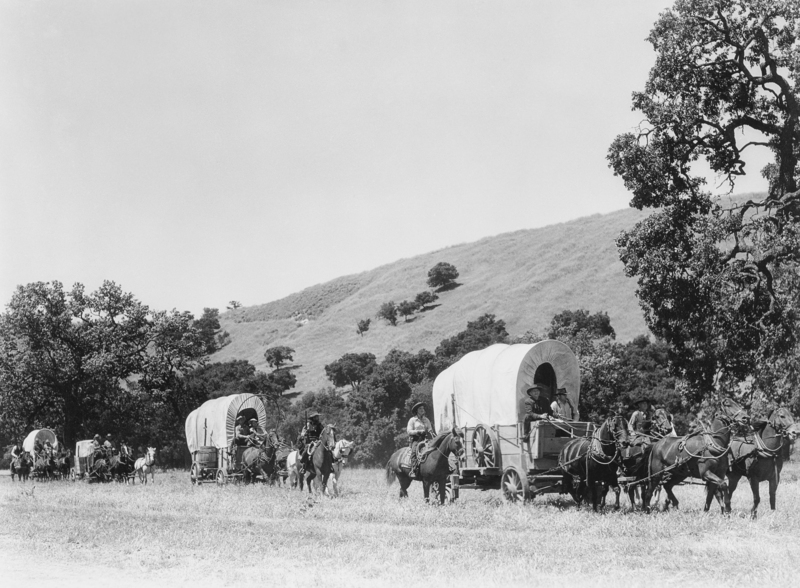Mastering the Art of Packing for a Seamless House Move
Posted on 05/06/2025
Mastering the Art of Packing for a Seamless House Move
Relocating to a new home can evoke a medley of emotions--from excitement and anticipation to anxiety and overwhelm. One of the greatest challenges during this process is ensuring all your belongings are efficiently and securely packed. Mastering the art of packing for a seamless house move isn't just a skill; it's a strategy. This comprehensive guide will walk you through every stage, equipping you with practical tips, proper organization methods, and expert secrets for stress-free packing and a flawless moving day.
Why Proper Packing Matters in House Moves
Moving house isn't just about transporting items; it's about protecting your memories and investments. Effective packaging minimizes damage, reduces moving costs, and streamlines the unpacking process. By mastering the art of packing for a seamless house move, you ensure a smooth transition that saves you time, money, and frustration.
The Benefits of Packing Like a Pro
- Fewer Damaged Items: Proper wrapping and boxing ensures fragile goods arrive intact.
- Efficient Unpacking: Well-labeled and organized boxes make setting up your new home significantly easier.
- Stress Reduction: Chaos and confusion are minimized when your move is systematic and orderly.
- Cost Savings: Optimized packing means fewer boxes and lower moving fees.

Preparation: Laying the Foundation for a Smooth Relocation
1. Create a Moving Timeline
Start early! Craft a moving calendar at least four to six weeks before the big day. Assign deadlines for packing different rooms, purchasing supplies, and confirming logistics. This approach prevents last-minute panic and helps you master the art of packing for a seamless move.
2. Gather Quality Packing Supplies
Never underestimate the power of good packing materials. Assemble the essentials:
- Sturdy moving boxes in various sizes
- Bubble wrap, packing paper, and stretch film for cushioning items
- Packing tape, scissors, and box cutters
- Markers and labels for effective organization
- Specialty containers for electronics, wardrobe items, and mirrors
Investing in quality supplies will pay off by ensuring your belongings stay safe throughout the journey.
3. Declutter Before You Pack
Streamline your move by purging items you no longer need or use. Go room by room and separate belongings into categories:
- Keep: Items you'll use in your new home.
- Donate: Gently used goods for charity.
- Sell: Unwanted items still in good condition.
- Recycle/Dispose: Broken or unnecessary items.
Reducing your load saves both time and money, making your house move more manageable.
Mastering the Packing Process: Room-by-Room Strategies
Packing each room in your home requires a unique approach. Follow these expert tips for ensuring a seamless house move:
1. Kitchen: Tackling the Trickiest Room First
The kitchen contains a complex mix of fragile, heavy, and perishable items. Here's how to handle it:
- Start with Non-Essentials: Pack out-of-season cookware, decorative dishes, and extra utensils first.
- Use Dividers for Glassware: Invest in cell boxes or add cardboard between glasses to prevent breakage.
- Protect Plates: Wrap each plate individually in packing paper and stack them vertically for strength.
- Seal Open Pantry Items: Avoid spills by securing open packages or discarding them before the move.
- Label Everything: Make unpacking simple with clear, specific labels.
2. Living Room: Protecting Electronics & Decor
- Photograph Electronics: Snap pics of cable setups for easy reassembly.
- Pack Books Flat: Prevent spine damage by stacking books horizontally.
- Wrap Artwork: Use bubble wrap and corner protectors for frames and canvases.
- Cushion Lamps and Fragile Decor: Fill open spaces in boxes with towels or packing peanuts.
3. Bedrooms: Keeping Clothes & Linens in Top Shape
- Wardrobe Boxes: Hang formal wear directly in specialty boxes for a wrinkle-free move.
- Rolling vs. Folding: Roll clothes to save space and minimize wrinkles.
- Pack Linens as Padding: Use sheets and blankets to cushion fragile items elsewhere.
- Label With Names: Mark boxes clearly so each family member finds their things easily.
4. Bathroom: Prioritize Essentials
- First-Day Box: Set aside toiletries, medications, towels, and toilet paper for immediate access.
- Seal Liquids: Wrap bottles in plastic and tape caps to prevent spills.
- Minimize Duplicates: Dispose of expired products and non-essentials.
5. Garage, Basement & Attic: Taming the Chaos
- Sort Early: Tackle these areas well before moving day as they accumulate clutter quickly.
- Bundle Power Tools: Remove batteries and wrap cords securely for transit.
- Dispose of Hazardous Materials: Movers won't transport paint, propane, or chemicals. Plan for proper disposal.
Packing Techniques: The Art and Science of Secure Moving
Master the Art of Box Packing
Follow these techniques to ensure maximum safety and efficiency during your move:
- Heaviest Items on the Bottom: Distribute weight so boxes are stable.
- Don't Overload: Keep boxes under 50 lbs--lighter for books and fragile items.
- Fill Gaps: Use towels, clothing, or packing peanuts to prevent shifting.
- Double Tape Lids & Bottoms: Reinforce with quality packing tape for extra security.
Detailed Labeling System
- Room Name + Contents: Write both clearly on every side of the box.
- Numbering System: Add a unique number and keep a master inventory list for quick reference.
- Fragile Warnings: Boldly label boxes containing breakables to alert movers.
Special Care for Specialty Items
- Mattresses and Furniture: Use protective covers and disassemble pieces if possible.
- Mirrors and Artwork: Secure with bubble wrap and place in specialty cartons.
- Electronics: Pack in original boxes or wrap thoroughly; take photos for setup reference.
Optimizing for a Seamless Move: Pro-Level Packing Tips
Use a "First Night" Essentials Box
Pack a dedicated box or suitcase with everything you'll need for your first night and morning in your new home:
- Pajamas, change of clothes
- Basic toiletries
- Medications
- Phone/laptop chargers
- Snacks and drinks
- Important documents (contracts, IDs, rental agreements)
- Pet and child essentials
Embrace Color Coding
Enhance organization by assigning each room a distinct color tape or sticker. Mark boxes accordingly for quick identification, ensuring a smooth, efficient house move.
Inventory and Take Photos
Photograph valuable or complicated items before packing. Maintain a detailed inventory--especially for insurance and easy retrieval.
Secure High-Value and Fragile Items
- Keep jewelry, cash, and vital documents with you during the move.
- Pack breakables with plenty of cushioning materials and mark boxes as fragile.
Time-Saving Hacks for Last-Minute Movers
If You're Short on Time...
- Enlist Help: Call friends, family, or hire professional packers for assistance.
- Pack Room by Room: Focus on one area at a time to prevent confusion and avoid misplaced items.
- Use What You Have: Pack clothes in suitcases, baskets, or even shopping bags when boxes run low.
- Label as You Go: Don't wait until the end to mark boxes--this reduces stress and helps maintain control.
Unpacking Tips: Ensuring the Seamless Arrival
How to Make the Unpacking Process Effortless
- Start with the essentials: Set up your beds, toiletries, and kitchen basics first.
- Refer to your labeling system: Place boxes in their designated rooms for systematic unpacking.
- Pace yourself: Unpack bit by bit to avoid overwhelm and exhaustion.
- Revisit your inventory: Use your master checklist to confirm all items have arrived.

Frequently Asked Questions: Mastering the Art of Packing
How far in advance should I begin packing for my house move?
Ideally, begin packing non-essential items 4-6 weeks in advance. Leave daily necessities for the final week. Starting early paves the way for a seamless and stress-free moving process.
Is it better to pack room by room or by item type?
For a seamless house relocation, pack room by room. This method simplifies labeling, unloading, and organizing in your new space.
Should I hire professional packers for my move?
If time or energy is limited, professional packers can pack quickly and securely. However, with an organized approach and the guidance in this article, mastering the art of packing yourself is entirely possible--and rewarding!
What should not be packed in the moving truck?
- Valuables (jewelry, cash, heirlooms)
- Important documents (passports, medical records)
- Hazardous materials (cleaners, batteries, propane)
- Perishable food
- Pets and live plants (if not allowed)
Conclusion: Your Path to a Flawless Move
Mastering the art of packing for a seamless house move transforms what could be a stressful experience into a well-orchestrated transition. By preparing early, investing in the right supplies, decluttering, organizing thoroughly, and applying professional strategies, you'll safeguard your belongings and your sanity. Remember: every smart move starts with a single well-packed box. Your new chapter awaits--happy moving!
```